Crunchy & Colorful: Can Dogs Eat Red Bell Peppers Safely? A Vet-Approved Guide
- 24 Apr 2025 09:20
As loving pet parents, we often find ourselves sharing our homes, hearts, and sometimes, our snacks with our canine companions. When chopping colorful vegetables like vibrant red bell peppers, it's natural to wonder if those pleading puppy eyes can be indulged with a crunchy piece. This leads to the common question: can dogs eat red bell peppers? Fortunately, unlike some human foods that pose significant risks to dogs, red bell peppers are generally considered safe and can even offer some health benefits when prepared correctly and given in moderation. This comprehensive guide, grounded in veterinary knowledge and adhering to EEAT standards (Expertise, Authoritativeness, Trustworthiness), will explore the nutritional value, safety, potential risks, and best ways to offer red bell peppers to your furry friend.
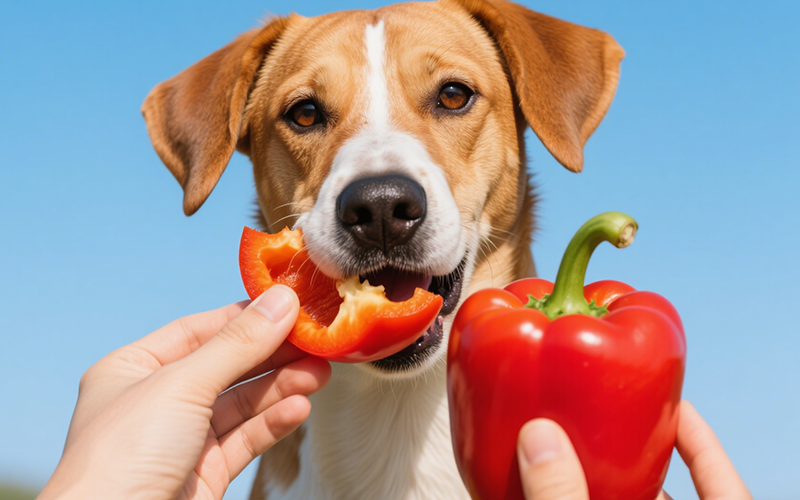
Understanding Red Bell Peppers: Sweet, Not Spicy!
First, it's crucial to distinguish red bell peppers from their fiery relatives. Red bell peppers belong to the *Capsicum annuum* species, but they are a cultivar specifically bred for their sweet flavor profile. Unlike chili peppers (like jalapenos, habaneros, or cayenne), bell peppers contain negligible amounts, if any, of **capsaicin**. Capsaicin is the compound responsible for the burning "heat" in spicy peppers, and it's something that can cause significant oral irritation and gastrointestinal distress in dogs. Red bell peppers are essentially the mature, fully ripened version of green bell peppers. As they ripen, their nutritional content changes, developing higher levels of certain vitamins and antioxidants, and their flavor becomes sweeter. This lack of capsaicin is the primary reason why bell peppers (red, yellow, orange, and even green, though red is often considered the most nutrient-dense) are generally safe for dogs, while spicy peppers are a definite no-go.
Nutritional Benefits: Why Red Bell Peppers Can Be Good for Dogs
When offered appropriately, red bell peppers can be a healthy, low-calorie addition to a dog's treat repertoire, providing several beneficial nutrients:
Rich in Vitamins:** Red bell peppers are nutritional powerhouses, particularly high in:
Vitamin C: A potent antioxidant. While dogs synthesize their own Vitamin C, dietary sources can provide extra support, especially during times of stress or illness.
Vitamin A (from Beta-Carotene): Essential for good vision, immune function, skin health, and cellular growth. Red bell peppers contain beta-carotene, which dogs can convert into Vitamin A (though less efficiently than pre-formed Vitamin A from animal sources).
Vitamin E: Another important antioxidant that supports skin health and immune function.
Vitamin B6 (Pyridoxine): Crucial for numerous metabolic processes, including amino acid metabolism, neurotransmitter function, and red blood cell production.
Packed with Antioxidants:** Beyond vitamins A, C, and E, red bell peppers contain other beneficial antioxidants like lycopene and various carotenoids. These compounds help neutralize harmful free radicals in the body, potentially reducing inflammation and supporting overall cellular health and longevity. This antioxidant boost is a key reason owners consider red bell peppers for dogs.
Low in Calories and Fat:** They are naturally low in calories and fat, making them a much healthier treat option compared to many commercial dog biscuits or high-fat human food scraps. This is beneficial for dogs needing weight management.
Good Source of Fiber:** The fiber content aids in digestion, helping to promote regular bowel movements. However, too much fiber too quickly can also cause digestive upset.
Hydration Support:** Bell peppers have high water content, which can contribute slightly to your dog's overall hydration, especially during warmer weather.
While nutritious, remember that red bell peppers should only supplement a complete and balanced diet formulated for dogs. They cannot replace the essential nutrients provided by high-quality dog food.
Confirming Safety: Are Red Bell Peppers Definitely Safe?
Yes, plain red bell peppers are widely regarded as safe for dogs by veterinarians and pet poison control centers when fed correctly. The key points confirming their safety are:
Lack of Capsaicin:** As mentioned, they don't have the heat-producing compound found in spicy peppers, eliminating the risk of oral burning and severe G.I. irritation associated with chili peppers.
Non-Toxic:** They do not contain any compounds known to be inherently toxic to dogs in the way that grapes, raisins, onions, garlic, chocolate, or xylitol are.
Nutrient Profile:** The vitamins and antioxidants they contain are generally beneficial, and they are low in fat and calories.
Therefore, the answer to "can dogs eat red bell peppers?" is yes, provided they are plain, prepared properly, and given in moderation.
Potential Risks and Things to Consider
Despite being generally safe, there are a few potential downsides or points of caution to keep in mind:
Gastrointestinal Upset:** This is the most common risk, especially if a dog eats too many red bell peppers or isn't used to them. The fiber content can cause gas, bloating, or diarrhea. Introduce them slowly and in small quantities.
Choking Hazard:** Raw bell pepper pieces, especially if cut too large or if the dog tends to gulp food, can pose a choking risk. Always cut them into bite-sized pieces appropriate for your dog's size. Cooking them until slightly soft can reduce this risk.
Stems and Seeds:** While the seeds and stems aren't toxic like those in some fruits (e.g., apple seeds containing cyanide precursors), they can be harder to digest and potentially contribute to G.I. upset. The stem is tough and could be a choking hazard. It's generally recommended to remove the stem and core (including most seeds) before feeding. A few leftover seeds accidentally ingested are unlikely to cause harm but aren't necessary to include.
Allergies (Rare):** Although uncommon, a dog could potentially have an allergic reaction to any new food, including bell peppers. Signs might include itching, hives, swelling, or digestive issues. Introduce slowly and monitor.
Pesticides:** Like most produce, bell peppers can carry pesticide residues. Always wash them thoroughly under running water before preparing them for your dog (or yourself). Opting for organic can reduce pesticide exposure but washing is still important.
Underlying Health Conditions:** If your dog has a sensitive stomach, pancreatitis history, or other specific dietary needs or health issues, it's always best to consult your veterinarian before introducing any new food, including red bell peppers.
Preparation is Key: How to Safely Feed Red Bell Peppers to Your Dog
Preparing red bell peppers correctly ensures safety and maximizes enjoyment for your dog: 1. **Wash Thoroughly:** Rinse the pepper under cool running water to remove dirt, bacteria, and potential pesticide residues. 2. **Remove Stem, Core, and Seeds:** Cut the top off and remove the inner core and most of the seeds. While a few seeds aren't harmful, removing them and the tough stem is best practice for digestibility and safety. 3. **Cut into Bite-Sized Pieces:** Chop the pepper flesh into small, manageable pieces appropriate for your dog's size to prevent choking. For smaller dogs, dice finely; for larger dogs, slightly larger pieces are okay, but ensure they are small enough to be swallowed safely if not chewed well. 4. **Serve Raw or Cooked Plain:** * **Raw:** Offers a satisfying crunch and retains the most Vitamin C. Ensure pieces are small enough to avoid choking. * **Cooked:** Steaming, boiling, or roasting (without any oil, salt, or seasonings) until slightly softened makes the pepper easier to chew and digest, which might be better for dogs with sensitive teeth or digestion. Avoid frying or cooking with harmful ingredients like onions, garlic, excessive fats, or salt. 5. **Introduce Gradually:** Offer only a small piece initially to see how your dog tolerates it. 6. **Moderation is Crucial:** Don't let red bell peppers become a major part of their diet. Use them as occasional treats.
Portion Patrol: How Much Red Bell Pepper Can My Dog Have?
Treats, including healthy ones like red bell peppers, should follow the **10% rule**: they should make up no more than 10% of your dog's total daily caloric intake. The rest should come from their complete and balanced dog food. Approximate serving suggestions (as an occasional treat, not daily): * **Extra-Small Dogs (under 10 lbs):** 1-2 small pieces (e.g., 1/4-inch squares). * **Small Dogs (10-30 lbs):** A few small pieces (equivalent to about 1/8 of a small pepper). * **Medium Dogs (30-50 lbs):** Several pieces (equivalent to about 1/4 of a medium pepper). * **Large Dogs (50+ lbs):** A small handful of pieces (equivalent to about 1/2 of a medium pepper). These are just general guidelines. Adjust based on your dog's individual reaction, size, and overall diet. Start with less and observe.
Quick Reference: Dog Safety & Red Bell Peppers Table
This table summarizes the key points about feeding red bell peppers to dogs:
| Aspect | Safety Level / Consideration | Details & Recommendation |
| Overall Toxicity | Generally Safe | Non-toxic, lacks capsaicin. Safe when plain and in moderation. |
| Nutritional Benefits (Vitamins A, C, E, B6, Antioxidants) | Good Source | Provides beneficial vitamins and antioxidants; low calorie; hydrating. Healthy treat option. |
| Risk of G.I. Upset (Diarrhea, Gas) | Low-Moderate Risk (If Overfed) | Due to fiber. Introduce slowly; feed strictly in moderation. |
| Choking Hazard | Low-Moderate Risk | Cut raw pieces small; cooking softens texture. Remove tough stem. |
| Seeds & Stem | Low Risk (Seeds) / Moderate Risk (Stem) | Seeds not toxic but harder to digest; stem is tough. Best to remove both. |
| Preparation | Important | Wash well, remove stem/seeds, cut small. Serve raw or plainly cooked (steamed, boiled). NO harmful additions. |
| Overall Answer to: Can dogs eat red bell peppers? | Yes, plain red bell peppers are safe and potentially healthy treats for dogs when washed, properly prepared (stem/seeds removed, cut small), and fed in moderation as part of a balanced diet. | |
Using Technology for Pet Health Queries: Meet PettureX
Navigating the world of safe human foods for pets can sometimes lead to questions or uncertainties. Having a resource for quick information can be helpful. The **PettureX** app is designed as a smart tool for pet owners, offering features to assist in pet care. Explore PettureX for:
Image Recognition for Species & Health:** Identify animals or upload photos of visible health concerns for preliminary AI insights (always follow up with your vet for diagnosis).
24/7 AI Veterinary Consultation:** Get immediate, general answers to common pet care questions like "What are the benefits of Vitamin A for dogs?" or "What human vegetables are safe for dogs?". The AI can provide quick information and help you decide when to consult your vet. *AI consults offer general guidance and do not replace professional veterinary advice.*
PettureX can be a useful companion app for accessing information and supporting your responsible pet ownership journey alongside your veterinarian.
Conclusion: Red Bell Peppers Get the Green Light (in Moderation!)
In conclusion, the answer to the question "can dogs eat red bell peppers?" is a reassuring yes. These sweet, crunchy vegetables are non-toxic, lack the dangerous capsaicin found in hot peppers, and offer a good source of vitamins and antioxidants with low calories. However, safety hinges on proper preparation and moderation. Always wash red bell peppers thoroughly, remove the stem and seeds, cut them into appropriate bite-sized pieces, and offer them plain (raw or cooked without harmful additives). Introduce them slowly and watch for any digestive upset. Remember the 10% rule – treats like bell peppers should only supplement a complete and balanced canine diet. When offered thoughtfully, red bell peppers can be a colorful, healthy, and enjoyable snack that you can safely share with your canine companion. As always, if you have any specific concerns about your dog's health or dietary needs, consulting with your veterinarian is the best course of action.
Related
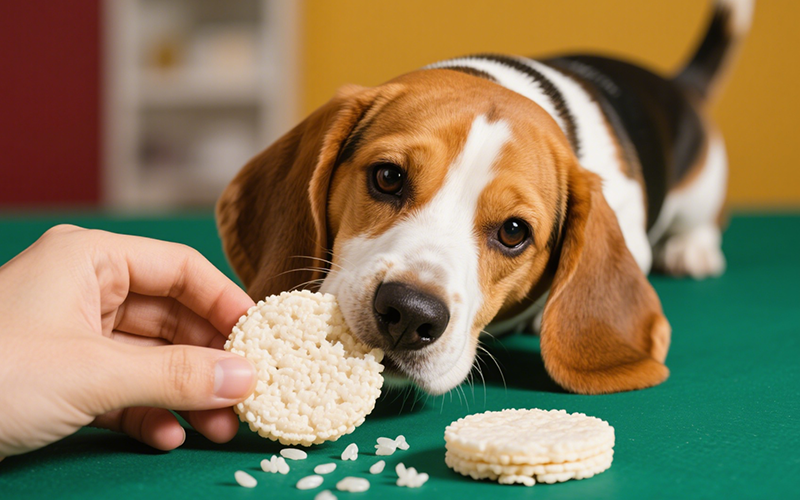
Rice Cakes for Rover? A Crunchy Question: Can Dogs Eat Rice Cakes Safely?
- 24 Apr 2025
Raspberries for Rover? A Vet's Guide to This Berry Good Treat for Dogs
- 23 Apr 2025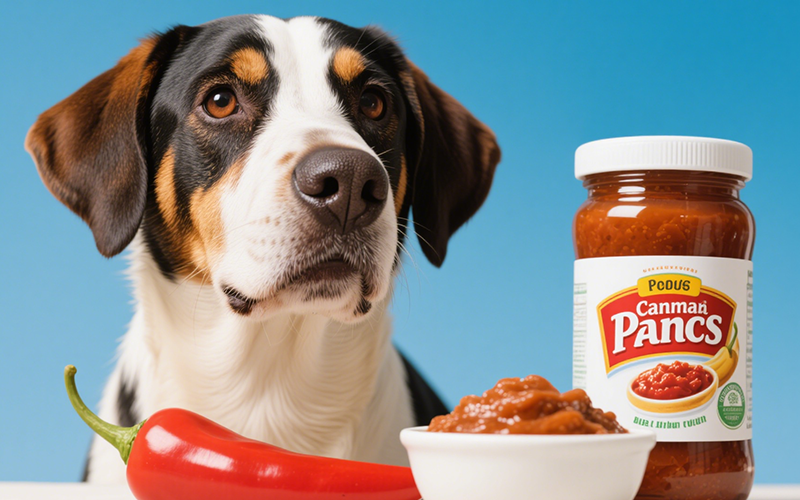
Ranch Dressing Dilemma: Can Dogs Safely Indulge? A Deep Dive into Why It's a Bad Idea
- 23 Apr 2025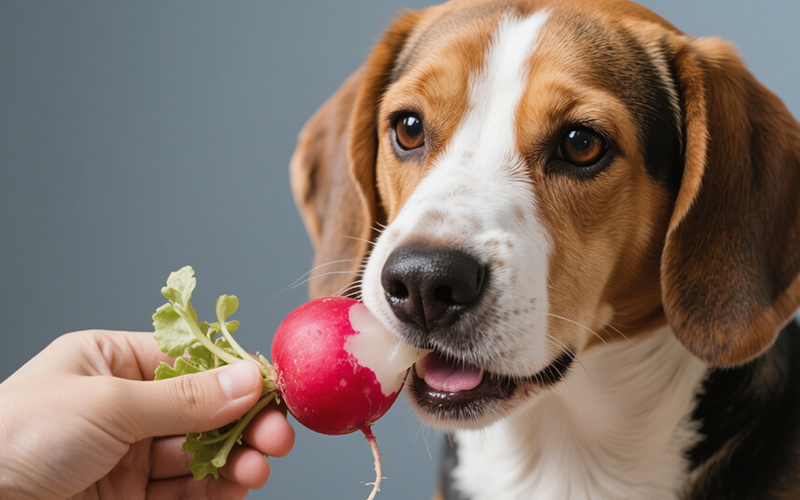
Radish Bites for Your Buddy? A Vet-Reviewed Guide on Whether Dogs Can Eat Radishes
- 22 Apr 2025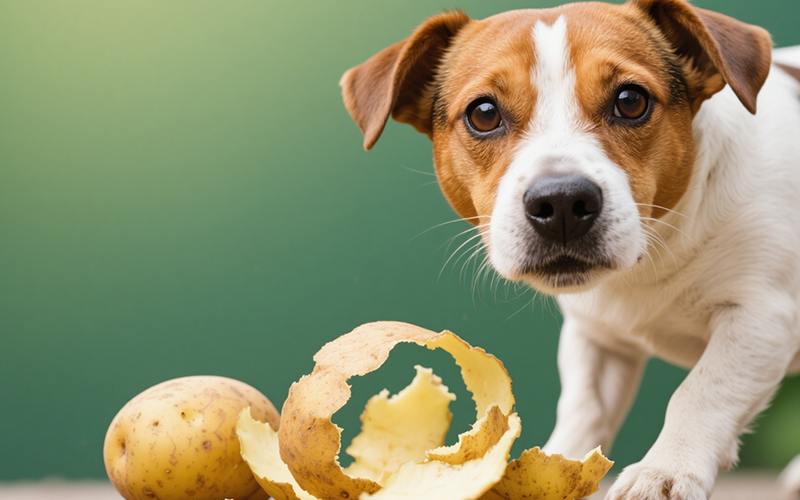
Potato Peels for Pooches? Unpeeling the Risks and Facts for Dog Owners
- 22 Apr 2025
Crunchy Curiosity: Can Dogs Safely Snack on Pork Rinds? A Deep Dive
- 21 Apr 2025
Pomegranate Seeds and Pooches: A Deep Dive into Whether Dogs Can Safely Indulge
- 21 Apr 2025
Can Dogs Eat Peaches? Vet Explains Benefits, Cyanide Risks & Safe Serving
- 16 Apr 2025
Can Dogs Eat Mulberries? Vet Explains Safety, Benefits & Potential Risks
- 16 Apr 2025
Can Dogs Eat Mozzarella? Vet Explains the Cheesy Truth (Risks & Benefits)
- 16 Apr 2025
